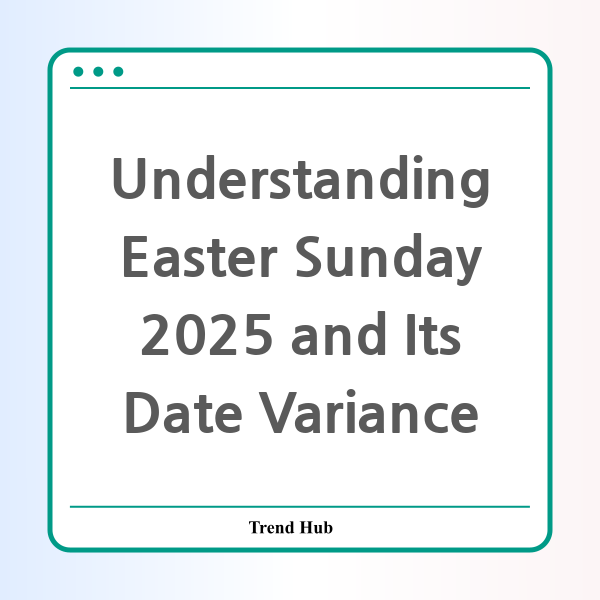* This website participates in the Amazon Affiliate Program and earns from qualifying purchases.

As Easter Sunday approaches in 2025, many people are left wondering, "Why is Easter celebrated this late?" This question often pops up, especially among practicing Catholics. If you're one of those curious about the intricacies of this movable feast, you're not alone. In this article, we will delve into how the date of Easter is determined, why it varies year to year, and why 2025’s Easter falls on April 20.
The date of Easter Sunday is not fixed, unlike Christmas, which is celebrated on December 25th each year. Instead, Easter can occur as early as March 22 and as late as April 25, resulting in a variability of 34 days.
In 2025, Easter will be celebrated on April 20. To give you some context, this date is relatively late in the established range. In fact, out of the next 500 years, it will be one of only 15 instances where Easter falls on this date, representing about 3% of Easters celebrated in that timeframe. The remaining 88% of the time, Easter will occur earlier than April 20.
To understand the fluctuating date of Easter, we need to look back to its origins. The timing is intricately linked to the Jewish feast of Passover, which is determined by the lunar calendar. Early Christians faced a significant dilemma: should they celebrate Easter in connection to Passover or on the day of the week when Jesus resurrected—Sunday? The debate, known as the "Quartodeciman controversy," ultimately led to a unified method of calculating the date.
In 325 AD, the Council of Nicaea established a set of guidelines for determining Easter. The council decreed that Easter should be celebrated on the first Sunday after the first full moon following the vernal equinox (March 21). This method was intended to ensure consistency, although it has not always worked perfectly across different Christian denominations.
Interestingly, Orthodox Christian communities calculate Easter using the Julian calendar rather than the Gregorian calendar which is predominantly used in the West. This difference results in divergent dates for Easter celebrations between Catholic and Orthodox Christians. In 2025, however, both groups will celebrate together on April 20, marking a rare opportunity for Christians to unite in their observance of this significant holiday.
As we approach the Lenten season, understanding Easter’s date and its implications can deepen one’s appreciation for this holiday. Lent, which lasts 40 days, begins with Ash Wednesday, falling 46 days before Easter Sunday. Thus, in 2025, Ash Wednesday will be on March 5. The overlapping calendars of traditional observances and lunar phases continue to make the calculation of Easter a fascinating topic for theologians and laypeople alike.
Why is this important, you ask? Well, Easter Sunday not only commemorates the resurrection of Christ but also symbolizes hope and renewal for millions around the world. Understanding its timing and significance can enrich your spiritual journey during the Easter season.
To sum up, while Easter Sunday in 2025 falls on April 20, making it one of the later dates for this festive occasion, it presents a valuable opportunity for reflection and unity among Christians. The complexities surrounding its calculation might seem puzzling, but they connect deeply to the historical context of early Christianity and the intertwined calendars that shape our observances today.
* This website participates in the Amazon Affiliate Program and earns from qualifying purchases.